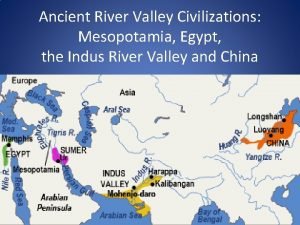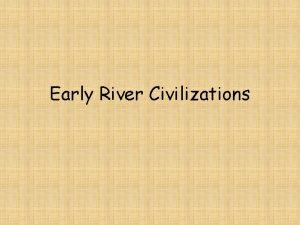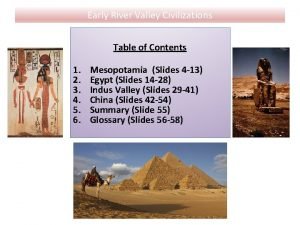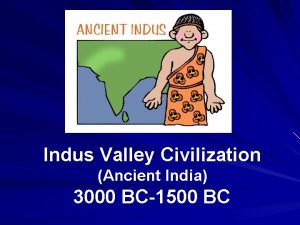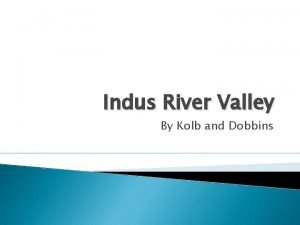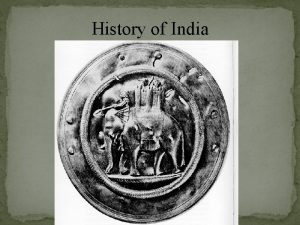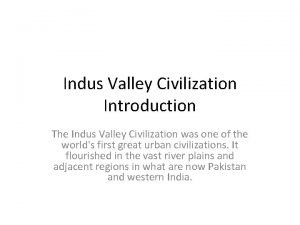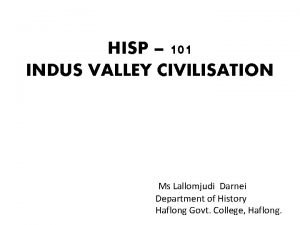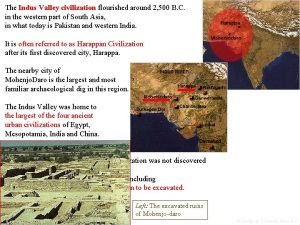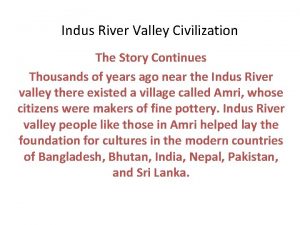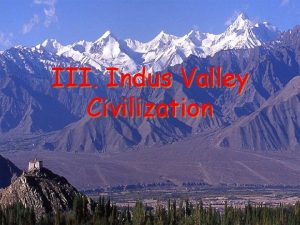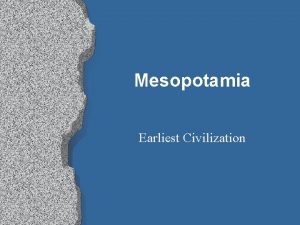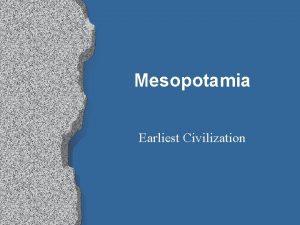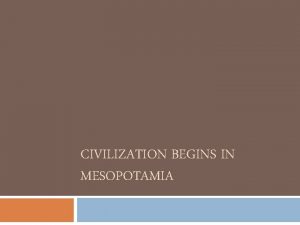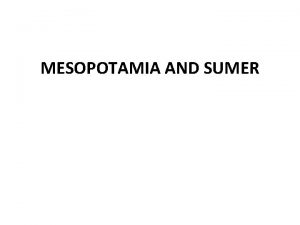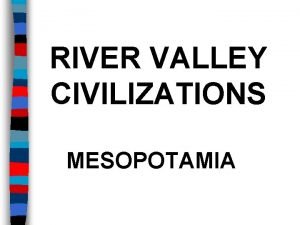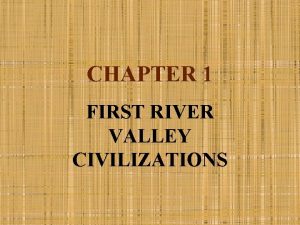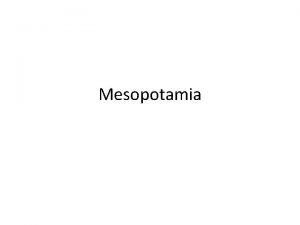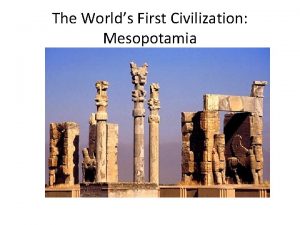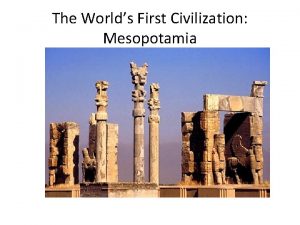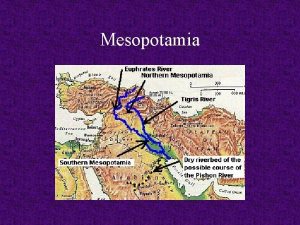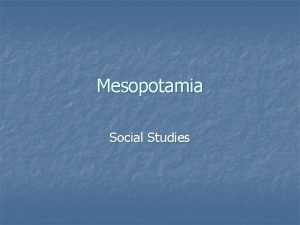MESOPOTAMIA The First River Valley Civilization River Valley
















- Slides: 16

MESOPOTAMIA The First River Valley Civilization

River Valley Civilizations The discovery of farming during the Neolithic Revolution allowed nomadic people to settle into civilizations

The world’s first civilizations all began in river valleys The first civilization began in an area known as Mesopotamia

Mesopotamia means The the Tigris and Euphrates Rivers “land between rivers” & is flooded once per year, leaving often called the “Fertile Crescent” behindof fertile soil ideal for farming or as the “Cradle Civilization”

The first civilization developed in the Fertile Crescent: Sumer But, surrounding deserts & the lack of natural barriers attracted outsiders to Mesopotamia made the Sumerians vulnerable to attack

Mesopotamia ■ Mesopotamia (the land between 2 rivers), is a valley between the Tigris and Euphrates Rivers. ■ These rivers often overflow and leave silt, which makes the soil rich for an agricultural society.

Ancient City-States ■ ■ ■ ■ Ancient Mesopotamia covered three general areas: Assyria Akkad Sumer Several different ethnicities lived in these areas. Mesopotamian civilization involved many peoples. The Sumerians developed the first Mesopotamian civilization.

Lasting Contributions ■ Advanced cities: –Sumerian city-states were protected by high walls –At the city center was a temple called a ziggurat

Lasting Contributions ■ Specialized Workers: –At the top of society were priests, and then kings –In the middle were skilled workers, like merchants –At the bottom, were common farmers & slaves

Lasting Contributions ■ Religion: – Sumerians & Babylonians were polytheistic – The Hebrews in Palestine were the 1 st monotheistic faith in history (Judaism) – The holy book of Judaism is the Torah; God gave Moses the Ten Commandments which serve as moral laws

Lasting Contributions ■ Government: – Babylonian King Hammurabi created the first legal code – Hammurabi’s Code had 282 laws based on justice & retaliation (an eye for an eye) – The code had different punishments for the various levels of society

Lasting Contributions

Lasting Contributions ■ Writing: –Sumerians made the world’s 1 st writing called cuneiform –Phoenicians simplified cuneiform to a 22 letter alphabet –Phoenician merchants spread the alphabet throughout the Mediterranean world –The alphabet influenced Greek, Latin, & English

Lasting Contributions ■ Technology: –Sumerians inventions include the wheel, sail, plow, & bronze metalwork

Activity Create a booklet that with include the following information for the civilization. ■ Location ■ Government ■ Religion ■ Agriculture ■ Cultural/ scientific contributions ■ Social structure Thinking Questions ■ How does geographic location influence the development of Mesopotamia in a positive and negative way? ■ Which of the 5 characteristics of civilization is most important for Mesopotamia? (evaluate) ■ How does Mesopotamia’s social structure reflect their values? How do these values differ from our values?

Closure Activity ■ Examine the following primary source documents and answer the questions. Write a paragraph answering the following question (give evidence from the documents): Was Hammurabi’s Code just?
 River valley civilization map
River valley civilization map Huang he river civilization
Huang he river civilization What river is this
What river is this Indus river valley civilization cloze reading
Indus river valley civilization cloze reading Conclusion of the mesopotamian civilization
Conclusion of the mesopotamian civilization Mesopotamia the cradle of civilization worksheet answers
Mesopotamia the cradle of civilization worksheet answers Ancient medication
Ancient medication Sumerian and indus valley civilization
Sumerian and indus valley civilization Religious beliefs of indus valley civilization
Religious beliefs of indus valley civilization Harappan civilization economy
Harappan civilization economy Indus valley civilization trade and economy
Indus valley civilization trade and economy Introduction of indus valley civilization
Introduction of indus valley civilization Indus valley civilization conclusion
Indus valley civilization conclusion Indus valley resources
Indus valley resources Who discovered indus valley civilization
Who discovered indus valley civilization Indus river
Indus river Indus valley game
Indus valley game
